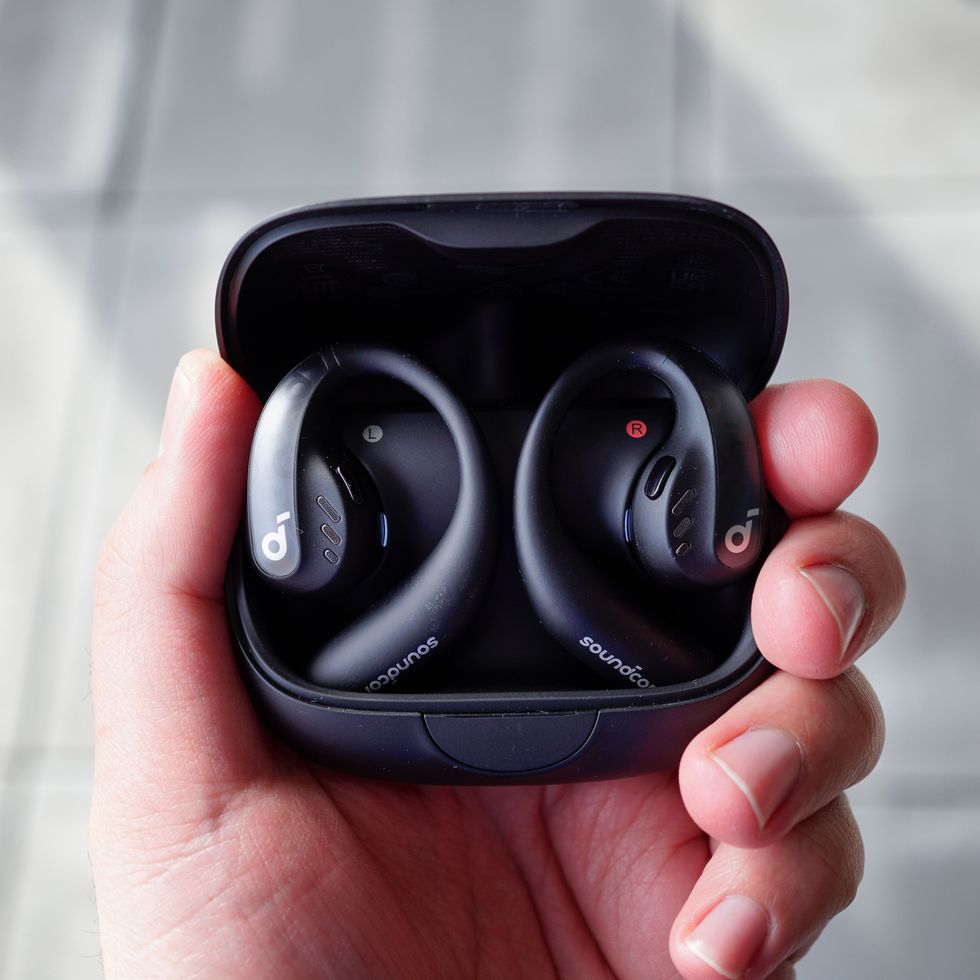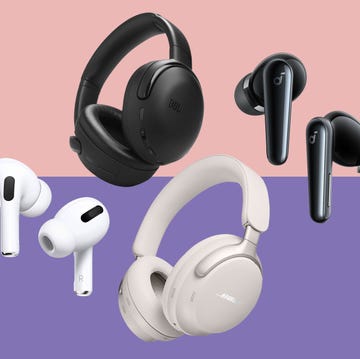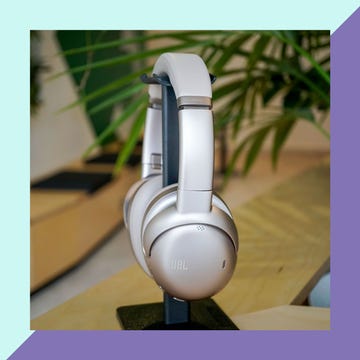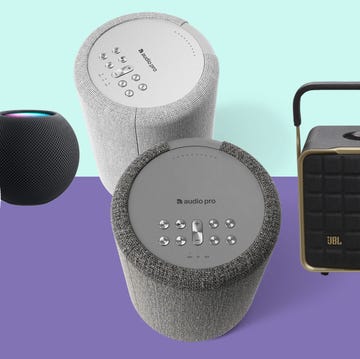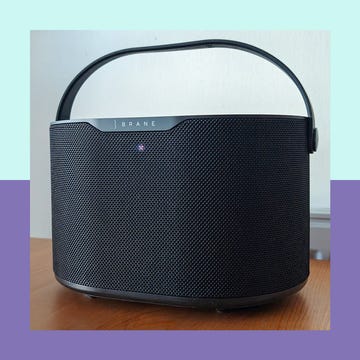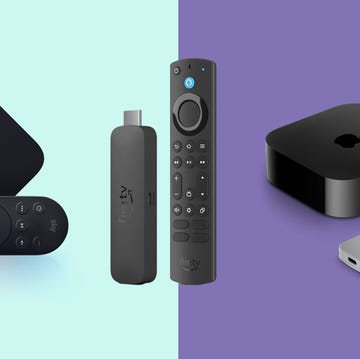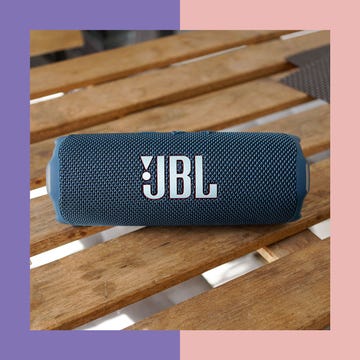We earn a commission for products purchased through some links in this article.
The 10 best open earbuds for awareness of your surroundings
Enjoy your playlists without cutting yourself off from the world

Do you love listening to music on the go but don’t want to give up awareness of your surroundings? Whether walking the dog or commuting to work, rather than just using one earbud or keeping the volume low, the best open earbuds could be the solution.
Open earbuds are something of a recent addition to the world of wireless audio, fitting somewhere between bone-conduction headphones, the best wireless earbuds and on-ear cans. They’re ideal for a wire-free listening experience without needing to put soft silicone or foam ear tips inside your ears, which can be uncomfortable.
Best open earbuds
Unlike their counterparts, these open (or “air conduction”) earbuds rest gently on the outer ear, with either a hook or clip design to hold them in place. You’ll still be able to hear music with clarity but also get the benefit of increased attention to your surroundings. And, unlike a “transparency” or “ambient” mode on some wireless buds, there’s no digital processing involved, you’ll still hear everything around you, and it’ll feel comfortable.
For this roundup, we’ve focused on true wireless designs that don’t have a cable or headband that loops around the back of the head (like we see on so many bone-conductive pairs), and that go back into a charging case to top up their battery levels when they’re not in use.
We have prioritised pairs that provide long-term comfort, great audio quality and natural awareness, as well as an unshakeable fit that works well for jogging and running, something we’ve double-checked with our friends at Runner’s World.
Read more: Best headphones buying guide | Best wireless earbuds | Best wireless over-ear headphones | Best noise-cancelling headphones | Best cheap headphones under £50 | Best open earbuds | Best headphones for kids | Best headphones for exercise | Best wired headphones
How the GH Tech Team tests open earbuds

In our hunt for the best open earbuds on the market, we checked out models from leading brands including Soundcore, Bose, Nothing, Cleer and Shokz, wearing them while out walking, while working at our desks and when jogging. We also tested the buds while wearing glasses, to ensure comfort for everyone.
We considered how good our awareness of our surroundings feels while wearing the buds and the volume level we could listen at without others hearing — the best models will direct audio straight into your ears, rather than acting as speakers for fellow commuters.
Like any headphones test, we listened to a lot of music from a variety of different genres – including pop, rock, classical, electronic, ambient and cinematic – along with our favourite podcasts or audiobooks.
Finally, we checked the battery longevity, how much charge is available with the case, how they work for calls, and for controlling playback directly from the earbuds rather than having to pull out our smartphone.
Pros
Impressive comfort and sound quality
Excellent durability
Great touch controls
Full customisation in the app
Cons
Case feels a bit cheap
Ear hook is chunkier than on rivals
Most people after flexible hook-style open earbuds will get everything they need and more from the Huawei FreeArc. They're rivals to Shokz, with an affordable price, great specs, intuitive controls and a comfortable fit. They work just as well with iPhones as they do with Android handsets and, while there is a companion app, we’ve found we haven’t needed to change any default settings.
They offer responsive and intuitive touch controls with simple taps for play/pause and skipping back and forwards, and then you can swipe up and down on either bud to handle volume. We had absolutely no trouble using this system. They're also really comfortable to wear. The FreeArc are a lot like Shokz models, which have a soft silicone exterior that makes them easy to wear for a long time without irritation. It's a lot better than the harder plasticky feel of some rivals. They come in simple grey, black or bright green colours, they don’t get in the way of glasses, and they look discreet too.
What about sound? We were impressed. The music has enough bass and clarity, and we found the overall performance quite comparable to the Shokz OpenFit Air. It’s very solid – you can get better-sounding open earbuds, but not without spending a fair bit more. These are also good for phone calls, with a more than serviceable microphone quality.
Yes, the OpenFit Air does offer some worthy competition at around this price, but unless you need the thinner hooks of the Shokz, we’d still opt for the FreeArc instead because they’ve got all the same features at a lower price, along with better controls and a better durability rating.
Key specifications
| Battery life | 7 hours on a single charge (28 hours in total with the charging case) |
|---|---|
| Charging | USB-C |
| IP rating | IP57 |
| Weight | 8g per earbud (85g with the case) |
Pros
Great value price for the features
Comfortable to wear
Impressive battery life
Handy companion app
Cons
The OpenFit sounds slightly better
Touch controls can be temperamental
The Shokz OpenFit Air offer the majority of the features of the more expensive OpenFit at a lower price.
They’re still IP54-rated for dust and water resistance, they have a similar battery life (six hours of uninterrupted playback on the OpenFit Air, compared to seven on the OpenFit), and a similar weight (8.3g versus 8.7g). They’re also very comfortable to wear with a “pliable cut-out design” to the ear hooks.
The main difference comes in sound quality, but we don’t feel it’s obvious until you play music on the OpenFit Air at higher volumes than you typically would. They don’t have quite as much punch to the bass and may have a little more distortion at those high volumes, but they’re otherwise comparable, and come in at £119 rather than £179.
Overall, we’re big fans of the Shokz companion app, the soft touch silicone material that makes the buds comfortable to wear, and the balanced sound quality. The touch controls can be a little hit-and-miss, but the overall experience is excellent. They offer a secure fit and feel, along with a great battery life and a pocketable charging case.
Key specifications
| Battery life | 6 hours on a single charge (28 hours in total with the charging case) |
|---|---|
| Charging | USB-C |
| IP rating | IP54 |
| Weight | 8.7g per earbud (73.8g with the case) |
Pros
Long battery life
Comfortable to wear
Good sound
Button controls
Great app
Cons
Slightly larger than some others
Not always easy to reach button on the buds
We love the huge battery life on the Soundcore Aerofit Pro. If you’re after a pair of open earbuds that you’re going to wear all day long, this is the pair we’d pick. And, if 14 hours in one go isn’t enough for you, they do go up to 46 hours of life once you factor in the charge available in the case. It’s also possible to restore more than five hours of battery with a 10-minute quick charge.
How do they sound and fit? Well, they're soft and comfortable to wear, including while wearing glasses. The sound quality is full-bodied and rich, with a lot of detail and a satisfying thump to the bass. They offer support for high-resolution audio codecs when used with Android devices, and the multipoint support makes them a great option for work, offering seamless switching between your phone and work computer when a call comes through.
The design is waterproof and sweatproof, and the earbuds stay stable during activities like jogging and workouts. We also like that they come with an option to attach them to a neckband that’s included in the package – this adds to the versatility and makes them a top pick for runners.
You can change the sound signature in the app and there are clicky buttons on each bud, which we like even if they can be tricky to reach. Overall, if your focus is on battery life, the AeroFit Pro is at the top of our list.
Key specifications
| Battery life | 14 hours on a single charge (46 hours in total with the charging case) |
|---|---|
| Charging | USB-C |
| IP rating | IPX5 |
| Weight | 12g per earbud (87g with the case) |
Pros
Affordable price
Comfortable fit
Sleek design
Impressive sound quality
Cons
Not the most subtle look
Button controls would be better than touch
While we'd previously picked Soundcore’s C40i as our top value pick in this clip-on style, the brand’s latest launch – the AeroClip – is better in almost every way. The AeroClip style is a less chunky version of the clip bud that lightly grips onto the outer part of your ear, evenly distributing pressure. They’re a lot like the Bose Ultra Open, but significantly more affordable at £129.99 rather than £299!
They’re more comfortable to wear than most clip-style buds we’ve tried, and they get very close to the “barely there” feeling of the Bose. We can wear these for half a day at our desk without really noticing or minding them being on. At only 5.9g per bud, they’re just as lightweight as the Bose pair too. The “ring” connecting the speaker portion and the part that grips to your ear makes them look like a fashion accessory – it’s something that will suit some, but might not be for everyone.
They also boast simple touch controls that you can customise in the app, plus IPX4 water resistance, which means that they’ll be sweat-resistant and able to handle splashes, and they’ll deliver an impressive seven hours of uninterrupted playback from a single charge. The AeroClip buds come in a simple Midnight Black, Champagne Mist or a Rosy Brown.
While we weren’t quite convinced by the sound quality of Soundcore’s C40i, there are a lot of positives when it comes to the AeroClip. Soundcore says they’ve got an advanced “virtual bass” technology that will make bass more punchy and deliver a natural sound across all frequencies. Bass is where open buds typically struggle, and we’ve found these quite immersive and energetic to listen to.
Overall, the Soundcore AeroClip is a fantastic value option that delivers the majority of what we love about the Bose Ultra Open in a much more affordable package.
Key specifications
| Battery life | 7 hours on a single charge (32 hours in total with the charging case) |
|---|---|
| Charging | USB-C |
| IP rating | IPX4 |
| Weight | 5.9g per earbud (55g with the case) |
Pros
Comfortable, even when wearing glasses
Great sound
Physical button controls
Pocketable case
Cons
Too expensive
Clip design won’t be for everyone
Quite small and easy to lose
These Bose buds are the only option on our list with an innovative “ear clip” style. They’re also, by some stretch, the most expensive wireless open-ear headphones we’ve tried. If you’re looking for a premium pair though, we think they're worth the splurge.
To fit them, you extend the flexible clip and put the cylindrical end behind the ear. You can then tinker with the fit and put them in the most comfortable position for you. And they're remarkably comfortable — we barely felt them — and because there’s no over-ear hook, they’re also the best to wear with glasses.
What about the sound quality? It’s fantastic and rich, offering loads of detail, precision and a satisfying boomy bass to go with the crisp highs. We listen to our music on these for hours on end while working from home, and they’re also a reliable option for calls, as long as you’re not taking them in a loud environment, where the microphones don’t perform quite as well.
We like how easy these are to control both through the comprehensive Bose app and via the simple buttons on each bud. This button does end up behind your ear, which isn’t always intuitive, but we think you’ll get the hang of it.
The case is also small and easy to store, while they offer a lot of battery life and an impressive standby time when not in use too. We like how you can turn on an encompassing “Immersion” mode that makes it feel like the sound is surrounding you, and the buds do a terrific job of putting you in a 3D audio environment. While they’re pricey, they do look and feel unique while offering some special features you’re not going to find with most rivals.
Key specifications
| Battery life | 7.5 hours on a single charge (27 hours in total with the charging case) |
|---|---|
| Charging | USB-C |
| IP rating | IPX4 |
| Weight | 6g per earbud (57g with the case) |
Pros
Soft, light and comfortable
Good battery life
Solid sound quality
Cons
Not the longest battery life
Tricky touch controls
Quite pricey
Shokz is a brand that’s well-known within the open-ear and bone conduction category, making multiple pairs of reliable designs for enhanced awareness, including the OpenRun and OpenRun Pro. The OpenFit is a fully wire-free design without a headband, and it’s an ideal pick if comfort is at the top of your priority list. We love the soft, smooth silicone construction, and the slim portion of the ear hooks made them easy to wear while we had our glasses on.
These are good for overall awareness and all-day battery life. They're secure to wear and we’re confident they’ll remain in place during vigorous activity like high-intensity workouts and running. They’re also a high-quality pick when you’re comparing what’s possible with open-ear sound, as they’re good at directing the audio towards your inner ear without it leaking out too much into the outside world.
They're great for providing the soundtrack to your day, but we did find it harder to keep up with a podcast in a busy area, as the noise of the environment is often louder than the voices you’re listening to.
The app is straightforward to use, and the charging case is compact enough to fit in our pockets. We aren’t the biggest fans of the touch controls on the buds as they aren’t always the easiest to use, but the main selling points here are both the well-rounded sound experience and the exceptional comfort that makes you feel like you’re not wearing any earwear at all.
Key specifications
| Battery life | 7 hours on a single charge (28 hours in total with the charging case) |
|---|---|
| Charging | USB-C |
| IP rating | IP54 |
| Weight | 8g per earbud (76g with the case) |
Pros
Loads of battery life
Lots of extra features in the app
Adjustable fit
Wireless charging
Cons
Not the best sound quality
Plastic can get uncomfortable over time
If you’re on a tight budget and some of our top value picks aren’t on offer, we’d consider the Soundcore AeroFit 2 as another excellent contender for under £100. They’ve got a good IP55 water and dust resistance rating, impressive battery life, decent sound quality and a slim charging case.
Like all the Soundcore options, they connect to the same handy companion app, which delivers a number of extra features including the ability to customise the tap controls, turn on a low-lag gaming mode, a spatial audio experience, or to pick different sound presets. You may or may not use these, but they’re a nice added benefit.
They’ve got heaps of battery, lasting for a whopping 10 hours of playback on a single charge, and recharging is simple with a speedy 10-minute refuel delivering four hours of use. And they also work with wireless charging pads too.
We like that they come in an appealing range of colours (black, white, blue or green) and the fit is also adjustable between a range of different positions, using a hinge to move the bud portion. This helps with comfort and makes them more adaptable to different ear sizes. The hard plastic material is a little less comfortable than soft silicone on rivals, but we still found them comfortable enough to wear for hours.
The sound performance is also solid for the price, but they’re a bit flatter and muddier in quality when compared to models in the same general price tier. We prefer both the Shokz OpenFit Air and Huawei FreeArc for sound quality, for example. Still, this Soundcore pair is often on offer and has a great set of features overall, for a sensible price.
Key specifications
| Battery life | 10 hours on a single charge (42 hours in total with the charging case) |
|---|---|
| Charging | USB-C and wireless charging |
| IP rating | IP55 |
| Weight | 10g per earbud (86g with the case) |
Pros
Low price
Secure fit
Decent sound
Cons
Rivals are more comfortable
Not the best sound quality
A solid pick for most listeners, there’s a lot to like about the 1More Fit SE — starting with the price. As the open earbuds market grows, we’re seeing more affordable options like this launch. These do feel a little bit cheaper than the competition, with a harder plastic exterior and less sturdy charging case, but overall they work well and deliver on battery.
The fit is generally comfortable too, although the ear hooks pinch slightly more than others we’ve tried, especially with glasses on. The charging case is also on the larger side, but it’s still slim enough to fit in your pocket.
When it comes to sound quality, they’re capable and offer an equaliser within the 1More app to tweak the signature to your liking. For casual listening or wearing while you’re working out or on the go, they’re not going to disappoint.
If you care about the audio, we found the bass quite boomy, sometimes at the cost of detail, but they’re not bad for electronic or pop music. Overall, they’re reliable for both playing your music and keeping you aware of the outside world.
Key specifications
| Battery life | 10 hours on a single charge (30 hours in total with the charging case) |
|---|---|
| Charging | USB-C |
| IP rating | IPX5 |
| Weight | 10g per earbud (81g with the case) |
Pros
Excellent sound quality
Comfortable fit
Long battery life
Cons
Massive charging case
Imprecise touch controls
These are the clear pick if depth, detail and immersion of your playlists are your top priorities. They're a brilliant option for listening to music all day long and staying aware of everything going on around you.
They may be a sports-focused design, but the Arc II is an all-around performer that’s particularly good for its battery life, powerful audio reproduction from its 16.2mm neodymium drivers, and comfortable fit.
They do initially appear to be a larger fit than some of the other earbuds on this list but we can confirm that they’re comfortable to wear even when we’ve got our glasses on, and the ear hook is soft enough for it to not feel awkward after several hours of use.
The speaker driver sits in an ideal position, just outside the ear, and is part of what helps these offer such a well-rounded sound. We find that they get quite loud and can be great for some slight isolation from the outside world while still leaving you aware of what’s happening. They’re also good for being able to hear your podcast or spoken word content while also being aware of what’s happening on the road when you’re going across a pedestrian crossing.
While they’re not without minor downsides – they’re pricey, the touch controls aren’t our favourite compared to buttons, and the charging case is so big that we can only recommend it for your bag and not for pockets – these do have a great companion app for tweaking your equaliser and controls, as well as doing firmware updates. Overall, a brilliant all-rounder for music lovers.
Key specifications
| Battery life | 8 hours on a single charge (35 hours in total with the charging case) |
|---|---|
| Charging | USB-C |
| IP rating | IPX5 |
| Weight | 14g per earbud (130g with the case) |
Pros
Great control system
Comfortable to wear
Stylish semi-transparent looks
Cons
Sound performance is subpar
They’re beaten by more affordable rivals
There’s a lot to like about Nothing’s debut open earbuds, especially if convenience and comfort are right at the top of your list of priorities in an open-ear design. We had great awareness of our environment while wearing these, and the hooks are soft enough to not bother when worn for several hours at a time. They’re also still comfortable to wear while we’ve got our glasses on, which isn’t always the case with the hook-style.
For us, the biggest benefits of the Nothing Ear (open) are its design and the control system. In general, touch controls can be tricky to use accurately when you’re on the move, and that’s especially true if you’re running or exercising (you might accidentally touch them when moving your hair out of the way, for example). The Ear (open) uses pinch controls that can be customised; it’s super easy to just “squeeze” the section of the bud that you need to, and use it for raising and lowering the volume, pausing and skipping around in playlists.
We also appreciate the charging case's slim design, and they’ve got a reliable eight-hour battery life on a single charge. Where they’re not quite up there with our favourites, though, is when it comes to sound quality. We noticed more echoing and reverberations when using these, and there’s a little too much distortion with many genres for us to recommend these primarily for music.
They’re practical, good value and easy to control, though. If you’re using them for calls, audiobooks and podcasts, we doubt you’ll notice the sound issues we had. They’re also a stylish option, and it will be easy to slip that slim charging case into a leggings pocket.
Key specifications
| Battery life | 8 hours on a single charge (30 hours in total with the charging case) |
|---|---|
| Charging | USB-C |
| IP rating | IP54 |
| Weight | 8.1g per earbud (80g with the case) |
How to choose the best open earbuds

What are the advantages and disadvantages of open earbuds?
Open earbuds are a distinct style when compared to typical sealed buds, and it’s worth knowing about some of the major differences you can expect to experience, especially as they’re not cheap.
For obvious reasons, they’re not going to provide noise-cancelling (check out our roundup of the best noise-cancelling headphones for that) and they won’t sound the same as you might expect from earphones and headphones, even the best cheap headphones. Here are some of the major advantages and disadvantages to note.
Pros of open earbuds
Comfort: We think this is one of the most important advantages. If you find silicone or foam tips that seal off your ear canal uncomfortable, the open style will feel much more breathable and less intrusive. We find we can often wear these for longer, and that the ear hooks or clips that keep them in place help with stability.
Awareness: It’s a big benefit that you’re able to stay aware of your surroundings while wearing open buds, and this is something you’ll miss with a lot of sealed designs, where you might need to remember to turn on a “transparency” or “ambient” mode. The open form factor is ideal for situational awareness; a major plus if you’re walking or running and need to be aware of traffic or other hazards.
Long battery life: Open earbuds tend to offer longer battery life compared to active noise-cancelling counterparts. This is because they don’t need to power smart noise-cancelling circuitry or complex extra features. This means that you should be able to wear these all day long while at work or running errands.
Cons of open earbuds
Sound quality: One of the most significant drawbacks to open earbuds is the sound quality, which tends to be unable to match in-ear designs due to the lack of a seal provided by the ear tips. Without the seal, these buds can sometimes struggle to reproduce deep bass frequencies (“bone conduction” particularly struggles with this, due to its reliance on vibration) and will almost inevitably “leak” sound at higher volumes, which could disturb those around you.
Lack of noise cancellation: Because these buds aren’t creating a seal in your ear, they also can’t cancel out background noises and distractions. This makes them less versatile when compared to some of the best true wireless earbuds or best over-ear headphones that you might use on the plane, during your commute or when blocking out noises at the office.
Larger charging cases: Overall, we’ve noticed that most open earbuds on the market, especially those with the ear hook style, fit into larger and less pocketable charging cases for refuelling and storage. This isn’t always the case and certain designs – like the ones from Shokz and Bose – are starting to get smaller, but it’s worth noting if you don’t have much pocket space when you’re going out for a run.
Are open earbuds better for your ears?
There are some benefits if you’re looking for buds that are better for your ears. Open designs won’t trap moisture, heat or bacteria as much when you’re working out and moving around. And if you don’t clean your traditional earbuds, those do put you at a slightly increased risk of ear infection. The open design is also more breathable and doesn’t touch your inner ears, so should be more hygienic.
It’s also worth thinking about the risk of noise-induced hearing damage. The open design may make you want to increase the volume, but you should still be aware of safe limits. Deafblind UK recommends you keep your sound levels between 60 and 85 decibels, which is why we also only recommend headphones for kids with an 85-decibel limit.
The same logic applies to adults, and as open earbuds are still speakers just outside your ears, you need to be careful not to blast them on full volume.
What is the difference between open and bone-conduction headphones?
While open earbuds have experienced a surge in popularity over the last year or so, bone-conduction headphones have also been around on the market, particularly appealing to runners and those exercising outdoors where spatial awareness is essential.
Bone-conduction headphones: You’ll notice that Shokz makes many of the most well-known bone-conduction headphones, but you can also pick up rivals from Suunto, H2O Audio, and Philips. These work via vibrations that they send into the listener’s cheekbones, leaving the outer ear completely exposed and delivering sound directly to the inner ear. It’s an excellent approach for awareness but has some downsides when it comes to sound quality.
Open-ear headphones: Alternatively, these designs do sit near the outer ear but are careful not to obscure it. Rather than sitting on the cheekbones, they use hooks or clips to keep them in place near your ears. We find that the sound is more natural compared to a bone-conduction approach, as these are essentially tiny speaker drivers outside your ears, so music playback mixes with exterior sounds.
What to consider when buying open earbuds
When shopping around for the best open-ear headphones, there are several key specifications to consider. These are the crucial ones that we keep in mind, though:
Battery life
Many of these earbuds are designed for all-day wear, so you’ll want to make sure that they have a battery life that works for that amount of time. Whether these are providing the soundtrack to your day out or allowing you to listen to audiobooks while waiting for the doorbell to ring, you’ll want to make sure they can stay powered on and play for several hours at a time. Most options in this category should deliver at least seven hours of uninterrupted playback, but some can manage double that.
Like other true wireless earphones, they’ll also top themselves back up with juice when you return them to their convenient charging cases. These may offer you two or three additional charges, so you shouldn’t have to worry about recharging them at the mains plug too often. When you do, it’s worth looking out for models that have a “quick charge” as this will tend to mean that they can restore several hours of playback from about ten minutes of being plugged in – ideal if you’ve run out of battery ahead of a long journey.
Water and dust resistance
This is important when looking for gadgets that you’ll use outside, whether you’re buying a portable speaker, a smartwatch or a phone.
Look for the “ingress protection” or “IP” rating. This will always feature “IP” followed by two numbers, such as “IP54”, and the first number (ranging from 0 to 6) indicates the level of protection against solids like dust while the second number (ranging from 0 to 9) tells you how sealed the device is from liquids like water. If you see a rating like IPX5, the “X” means that it hasn’t specifically been tested for dust protection while the “5” tells us that the gadget can deal with water splashes and some jets, so it will be reliable for use in light rain.
Shokz makes waterproof bone-conduction pairs with super-protective IP68 ratings, but it is rare to find such a rating on open designs at the moment.
Controls and ease of use
You’ll find controls on the earbuds themselves, and you can use these to take charge of the playback and access the features of the earbuds. These tend to be either touch controls or physical buttons, and while we tend to prefer the clicky responsiveness of buttons, it’s going to be a personal preference and a quick tap to change the song might be more convenient for runners.
Through these controls, you won’t only be able to skip ahead in your playlists, you may also be able to put the volume up or down, call on your smartphone’s voice assistant, or enter a more immersive mode with dynamic head tracking.
Companion apps
Like a lot of Bluetooth products nowadays, you’ll be able to link most open earbuds to a companion app that you download on your phone. With this, you should be able to tweak controls, customise the sound signature and update the firmware on the buds to deal with any potential bugs or issues that the manufacturer notices.
While it’s possible to use the earbuds without the app at all, we’d always recommend having the app to troubleshoot any issues that you have and to get your earwear working exactly the way you’d like it to.
Simon Cocks is Good Housekeeping UK’s Technology Editor, overseeing tech shopping content and strategy for the title. He previously also worked across other titles including Esquire UK, Digital Spy, Men’s Health UK and Women’s Health UK.
Simon specialises in testing the latest smart gadgets, home entertainment gear, headphones, speakers, portable chargers, radios, e-book readers and smartphones. He's reviewed top tech products from brands including Google, Apple, Amazon, JBL and Bose.
A magazine journalism graduate from Kingston University in 2014, Simon also worked on the Discovery and Silkroad inflight magazines. He then gained experience writing about entertainment at SFX and Total Film. He also contributed reviews and interviews to TwitchFilm (later ScreenAnarchy), CultBox and Frame Rated.
He joined Good Housekeeping UK as the Editorial Assistant for Special Projects and was part of Good Housekeeping’s Consumer Affairs Team between 2014 and 2019. In this role, he conducted price comparison research, wrote detailed household and money-saving advice guides and edited thousands of in-depth reviews for the Good Housekeeping Institute.
He has focused on technology and gadgets since 2020, where he started by testing out power banks and instant cameras. He writes reviews, roundups, news articles and deals updates, and also covers top tech deals during sales like Amazon Prime Day, Black Friday and Cyber Monday.
When not testing out the latest gizmos, you’ll find Simon either catching up with the newest releases at his local cinema or out shooting with his beloved compact camera.
You can follow Simon on Instagram, on Bluesky, on LinkedIn and on Threads.

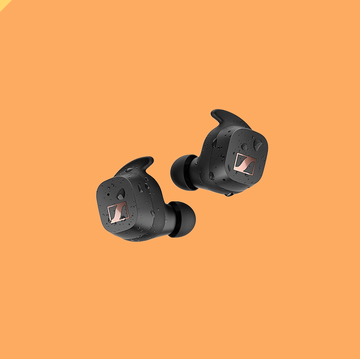
13 best headphones for running and workouts
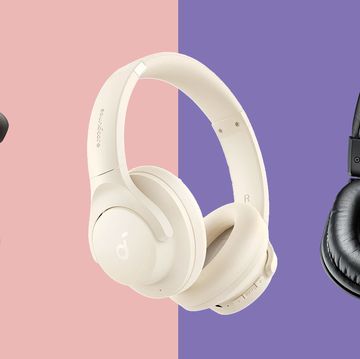
The best headphones under £50
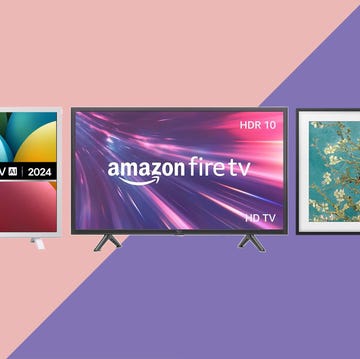
The best 32-inch TVs for smaller spaces

Best wireless earbuds to shop in 2025


